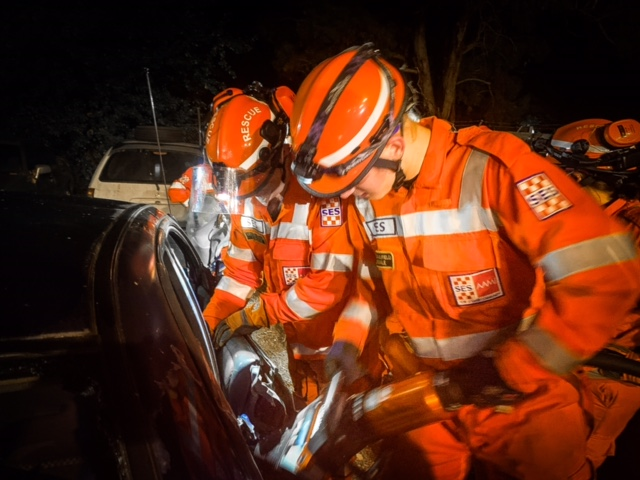Lilydale SES has once again been named as one of the busiest SES units in the state, notching up close to 2000 responses in the last year.
The major storm events of last year contributed heavily to this title, one unit controller Shaun Caulfield said the unit is unlikely to be rid of anytime soon.
“There was obviously the big June storm event, which is fairly forefront in most people’s minds because of the level of destruction and devastation that it brought and the duration of the impact,” he said.
“We had a couple of other supplemental incidents after that. One in September and another one in October, which is what we consider the traditional storm season coming from the end of winter into the start of spring, that really kept us busy.”
Given the geography of the land in the Yarra Ranges, between the established trees, flood plains and the Yarra River, as well meteorological phenomena of mountainous weather patterns, Mr Caulfield said it all adds up to a high impact area.
“We put all those things together plus a community that likes to live in amongst the bush, for what we do, we’re going to see the impact of how that is going to flow onto people needing our assistance and also with the unpredictability of our weather patterns,” he said.
While Mr Caulfield said the last six weeks have been welcomed respite for the unit, “from an operational perspective, training continues” and preparations for a busy season are in place.
Recruiting remains frequent every three or four months and members will be conducting a door knocking service over the weekend of 28 and 29 May to remind residents of the risks during this winter and spring season.
“Members will be approaching households in areas we know are flood prone. So particularly the area along Beresford Road and Cave Hill Road,” Mr Caulfield said.
“We’re going to be talking to them about understanding the flood risk and some basic flood planning and we will continue to put things out there to remind people as we come out of winter to make sure their gutters are clean.”
Mr Caulfield said around 50 per cent of flooding problems in houses can be attributed to blocked gutters during a sudden and heavy spring downpour.
While the unit has just onboarded more members recently, the interest from the community seems to be perpetually there, something Mr Caulfield welcomes.
“It’s fantastic to see that people do know that we’re here and are looking to see whether they have the time. Because at the end of the day, if they’ve got the time, we’ll help them get the skills.
“The main commitment we need from a prospective member is are they willing to put in the Monday night training for a couple of hours and obviously availability when the pager goes off.
“We’re always looking for more people to come on board.”







